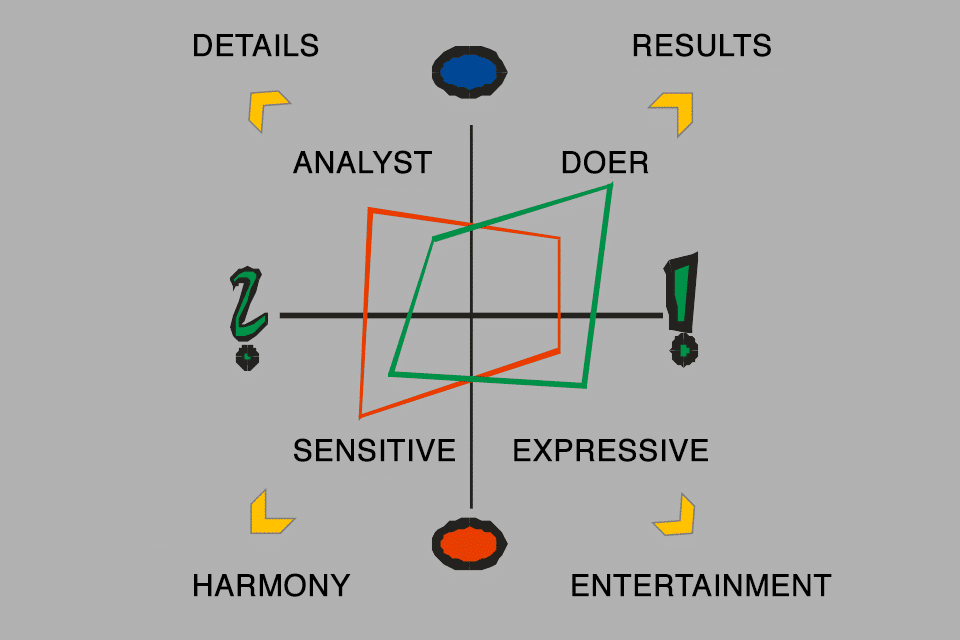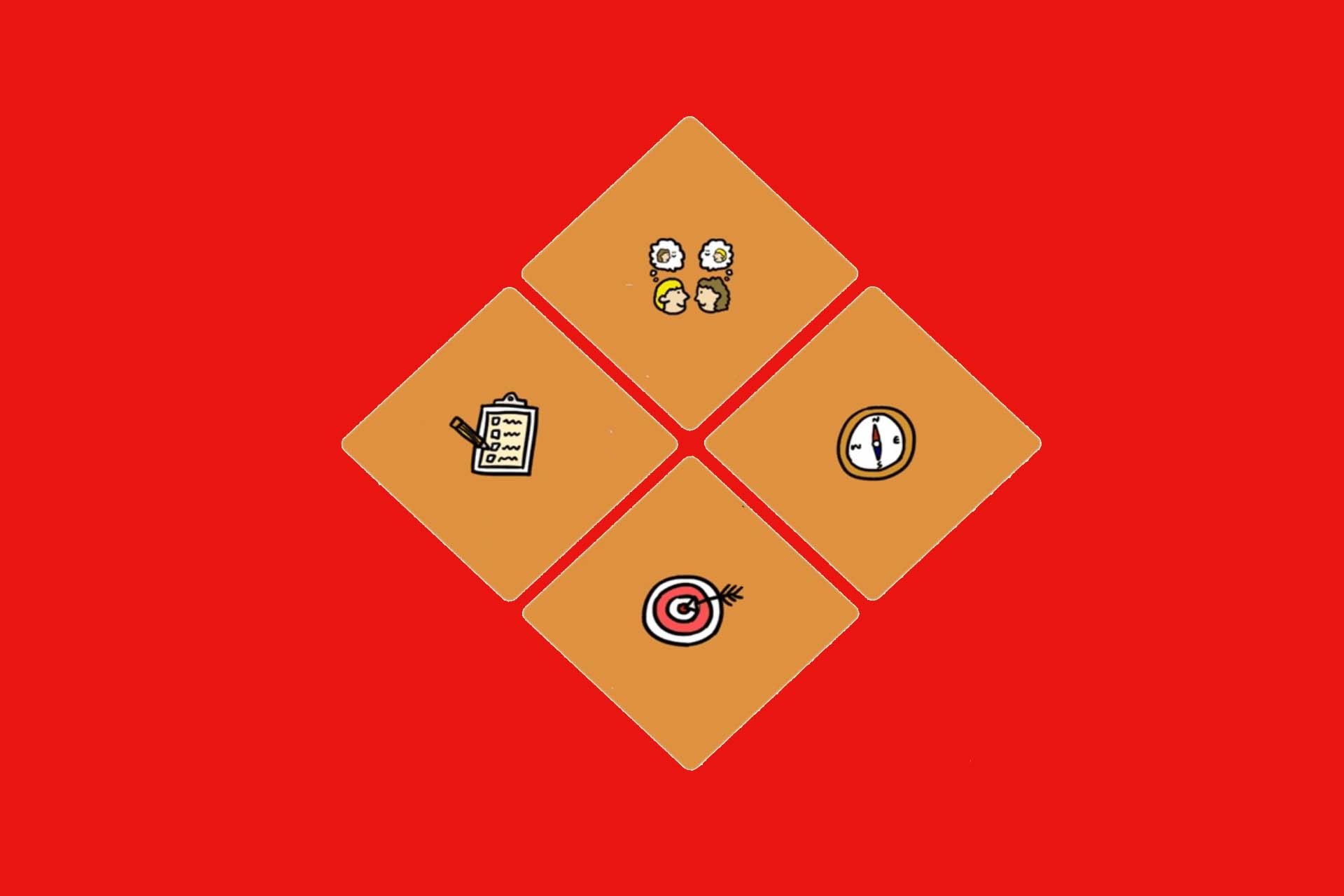People are quite different, aren’t they?
People are quite different and that makes communication difficult sometimes, isn’t it? Talking past each other is easy. But what influences that?
Let’s take our sensory organs. The most important ones for communication are the eyes, the ears and the hands. We see, we hear and we comprehend our environment. But everybody has his own preferences. One person likes to read something or watch a video, another prefers to immerse himself in an audio book or a podcast or talk about it right away, and a third person absolutely has to have something in his hand, a real book or at least a printout or alternatively a pen, looking at documents on the computer is not possible at all. These are the eye people, the ear people and the feeling people. This is also called Representation Systems.
For about 60% of the people the optical perception is the most important. About 30% prefer the acoustic channel and the remaining 10% primarily perceive emotionally or kinesthetically.
Of course, the other channels are also used, but the feel-good moment lies with the primary channel. And if exactly this channel is not used, there is a great chance for irritation and growing dissatisfaction – which have nothing at all to do with the content but only with its packaging.
# 1: Which type are you?
What can you do? Which type are you? If you haven’t figured it out yet, the first thing to do is test yourself. What kind of information do you feel comfortable with, where are you missing something, where do you get restless? If necessary, people who know you well can help you out. The realisation may let you understand why a few conversation situations didn’t go so well. In the future you will know in advance what will happen in certain situations and you will be able to formulate your information requests.
Franklin D. Roosevelt apparently knew very well that he was a listening type, because he had everything read to him and did not devote himself to the files until he had gained a first impression through his primary perceptual channel. In complete contrast, John F. Kennedy first requested a written statement from his advisors before any discussion. And of Ronald Reagan, it was said that he would have preferred films for the briefing.
Even if you are not the President of the USA, you can take care of getting your information in the appropriate form in the future. But even more important – from now on you can prepare your information in a suitable way for others:
- For the visual type you give something to read and look at, text, graphics and pictures.
- For the auditory type, prepare a short oral summary.
- For the emotional type, bring something to touch, even if it’s just the printed document in a tactilely interesting folder instead of the usual loose-leaf binder or even a mail.
Very important: If you don’t know your own pattern, if you don’t think about it, or don’t get around to it in stress, then you are excessively using your own primary channel, and that can go quite wrong, depending on the audience.
Language reveals a lot about us
By the way, finding out the type of the other person is also possible through the language itself. One person “has a good feeling” about a project, the next person “thinks it looks good” and a third thinks after the presentation that it all “sounds very good”.
The visual type talks about having to look at a situation, make a picture of it, look at it more closely. Something needs to become clear to him, he wants to get an overview, create an outline, change perspectives or anticipate a development. He must be able to see it, physically or in his mind’s eye, in order to get a clear view. He pulls up your document or sketches something in his notebook.
Does that look good to you?
The acoustic type needs to hear something, he wants to listen and asks. He wants to be told something and wants you to lend him an ear. It must be coherent, sound good, be harmonious. An idea develops quietly. He is sensitive to sounds and when he concentrates he sometimes closes his eyes.
Does that ring a bell?
The kinesthetic type goes through a situation, senses tensions and whether something fits together or not. He slowly warms up when he gets a good feeling about something. If not, then maybe something is upsetting him and he wants to look at the issue more, go through the documents again carefully to get a handle on it.
How does that feel to you?
The language of others helps you decode their communication preferences, and it can also help you speak true to type, if that’s what you want.
The Social Dialects
A second model I find even more exciting. This very simple model of human behavior goes back to the psychologist C.G. Jung and combines two dimensions:
- How do we approach others – are we extroverted/dominant or introverted/questioning?
- How do we deal with ourselves – do we live out our emotions or are we objective/controlled?
In this classic 4-field matrix, this turns into four types or Social Dialects, which are described in pure culture in the model:
- the factually determining doer,
- the factually questioning analyst,
- the emotionally questioning sensitive and
- the emotionally extroverted expressive.
Does this description sound familiar to you?
# 2: Which type are you?
We can add a further striking aspect to this brief, but nevertheless already informative description. Each of these four types still has a very specific ultimate goal towards which they are striving:
- The doers are fixated on results,
- the analysts look for the details,
- the sensitive need harmony and
- the expressive live for entertainment.
If a type has reached its goal or if its achievement is reliably in prospect, it is an attentive interlocutor. However, if it is still open, then working on it takes precedence over all other issues – which the other participants often find disturbing. If it is unlikely that the goal will be achieved, interest in the conversation wanes. This can manifest itself in very different ways, ranging from inner emigration to active disruption.
Of course, we have different proportions of each of these social dialects, and for each of you the distribution looks different. We also throw different amounts of each type into the mix, depending on the situation, the task, and the people involved. At the same time, we have one or two expressions that we prefer to use.
It is now interesting to reflect precisely on this distribution and its situational variation, to question oneself. How well do you know yourself, how far do you know others? How can you tell, and if you can, quickly?
Who is who? Rapid Type Check
In many situations, we make a little small talk. “How was the weekend? Was the movie as great as everyone says? How’s the family?” In the future, if you listen not only to the content, but also to how the stories are told, you will learn a great deal about current communicative conversational needs, because everyone answers the question in their at the moment preferred dialect.
Imagine, at the beginning of a business conversation with a new interlocutor, you ask “How was the journey?” or “What is our conversation about, what is important to you?” And now please imagine how the four types will answer. You’ll get pretty accurate information about which Social Dialect you should use to continue the conversation, won’t you?
Value-free inventory
With all the analysis, one thing is very important. Both models are value-free inventories. A valuation only comes into play through two questions:
- Am I satisfied with my effect on other people or not?
- Do I have the right qualifications to do a certain job well?
The answer to both questions may mean taking a closer look at your own social and communication skills.
Perhaps even more important is something else. If you can match the behaviors that bother you in others to a particular type, two realisations may come up to you:
- Sure, he’s just being himself and not doing it to annoy me!
- And: Maybe I sometimes get on other people’s nerves with some of my ‘special characteristics’?
These insights help enormously to go through life in a more relaxed and ultimately accepted way.
Notes:
Conrad Giller has published more posts in the t2informatik Blog:

Conrad Giller
Conrad Giller has been working for about 30 years as a trainer, coach and consultant for almost all challenges of oral communication: conflict, team, leadership, storytelling, presenting, moderating, media, etc. He is happy to pass on his experience online and offline in workshops.



